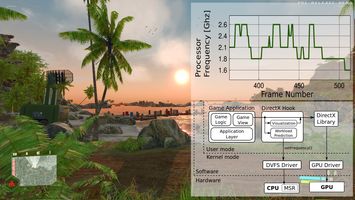Power Management for Interactive Applications
Graphics-intensive game applications gained significant popularity in recent years. Although most of them are available on high-end desktops, the advent of these applications on battery-powered mobile devices (e.g., laptops, PDAs, cell phones and portable game consoles) is steadily increasing. This recent development is resulting in a constantly widening gap between the demand for computational resources on portable devices and the corresponding energy resources available through batteries. In this context, power management techniques play a significant role in reducing this gap and in increasing the energy efficiency of these devices.
Most of these devices are equipped with dynamic voltage/frequency-scalable processors in which the power dissipated per clock cycle is directly proportional to its frequency and the square of the supply voltage. Therefore, one can reduce energy consumption through dynamic voltage frequency scaling (DVFS) techniques, where the processor's clock frequency is dynamically adjusted based on the predicted workload of the next frame.
Research Problems in this area are amongst others:
- Accurate Workload Prediction for DVFS
- Instrumentation Techniques for Closed-Source Games
- Game State Classification
- User Perception Study
- Combined Power Management for CPU and GPU
Selected Publications
- Estimating the Limits of CPU Power Management for Mobile Games (Benedikt Dietrich, Nadja Peters, Sangyoung Park, Samarjit Chakraborty), In IEEE International Conference on Computer Design (ICCD), 2017.
- Frame-based and Thread-based Power Management for Mobile Games on HMP Platforms (Nadja Peters, Sangyoung Park, Dominik Füß, Samarjit Chakraborty), In IEEE International Conference on Computer Design (ICCD), 2016.
- DEMO: Power Management using Game State Detection on Android Smartphones , In 11th International Conference on Mobile Systems (MobiSys), 2013.
- Managing Power for Closed-Source Android OS Games by Lightweight Graphics Instrumentation , In NETGAMES, 2012.
- LMS-based Low-Complexity Game Workload Prediction for DVFS , In IEEE International Conference on Computer Design (ICCD), 2010.

